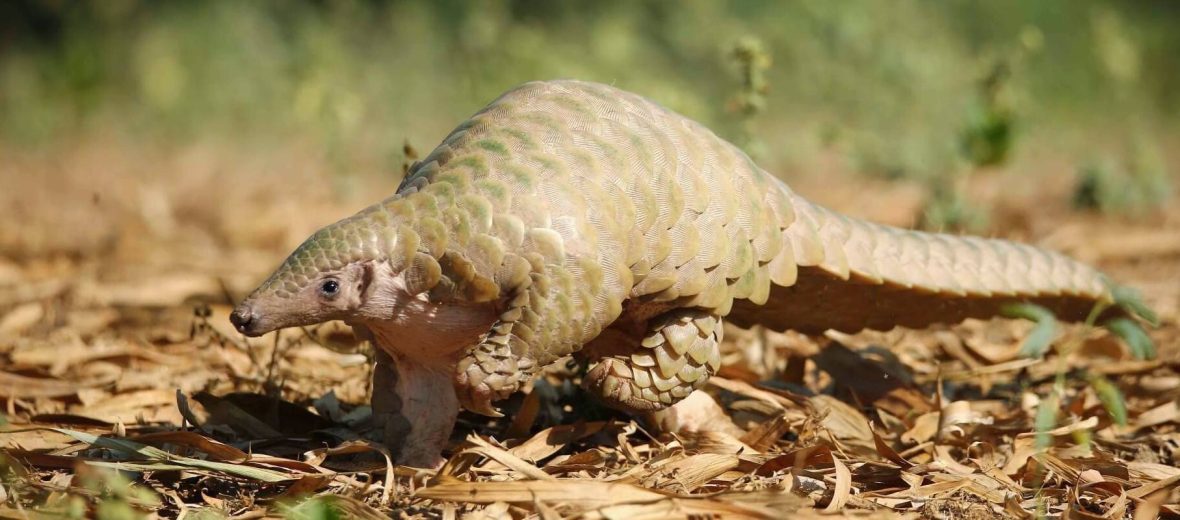
The Indian pangolin, aka scaly anteater or thick-tailed pangolin, is the larger of the described pangolin species, and can be found in Bangladesh, India, Southern Nepal, some portions of Pakistan, and Sri Lanka. They prefer partially sandy soil located in secondary forests, grasslands, desert habitats, and barren hills. Unfortunately, due to habitat loss at the hands of the lumber industry and ranching; hunting (for their meat and scales that are used in traditional medicine); and trapping, these incredible creatures are listed as Endangered by the IUCN. Their numbers are also decreasing. The most recent IUCN survey was conducted in 2019.
First the Stats…
Scientific name: Manis crassicaudata
Weight: Up to 29 lbs.
Length: Up to 48 inches
Lifespan: Up to 13 years
Now on to the Facts!
1.) These shy creatures are nocturnal (active at night).
2.) They retreat to their burrows during the daylight hours. Their burrows can be as deep as 19+ feet!
3.) Burrows are typically closed off during the day with loose soil to help hide the entrance from predators.
4.) Sans humans, tigers are their only natural predator.
5.) Indian pangolins are terrestrial (spend their lives on the ground), and semi-fossorial (spend part of their lives in their burrows).
But wait, there’s more on the Indian pangolin!
6.) When irritated, they produce a loud hissing sound.
7.) Ants, termites, and their larvae & eggs are all on the menu. They have also been documented eating beetle wing casings, cockroaches, and worm skin.
Did you know…?
These critters won’t break any land speed records, as they can only move at a top speed of 3.10 mph.
8.) Females undergo up to a 70 day gestation (pregnancy) that yields 1 and sometimes 2 pangopups.
9.) The pangopup is born precocial (self sufficient), with eyes open, and able to walk.
10.) At around 1 month of age, they take to riding on mom’s tail as she forages for food.
But wait, there’s still more on the Indian pangolin!
11.) They are weaned at around 3 months of age.
12.) The forelimb claws of the adults are nearly as long as their forelimbs, and are used to rip open ant hills and termite mounds.
Did you know…?
These pangolins can consume up to 70 million ants and termites a year, each!
13.) Their claws are so strong that they have been known to venture into nearby towns and dig into concrete in order to get to food.
14.) Of the 3 Asian pangolin species, the Indian pangolin has the largest scales.
15.) Their scales are made of keratin. Keratin is the same substance that makes up not only our nails and hair, but also the claws of other animals & rhino horns.
Now a Short Indian Pangolin Video!
Be sure to share & comment below! Also, check out the Critter Science YouTube channel. Videos added regularly!
Want to suggest a critter for me to write about? Let me know here.
Some source material acquired from: Wikipedia & IUCN
Photo credit: Wildlife SOS



